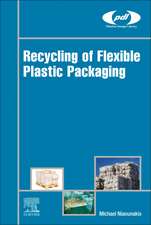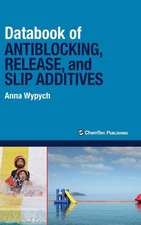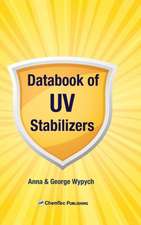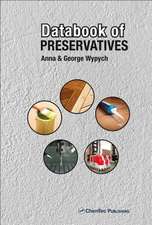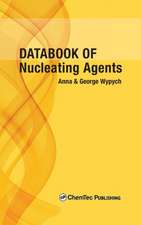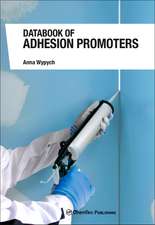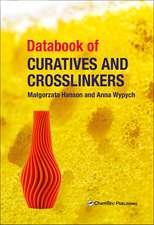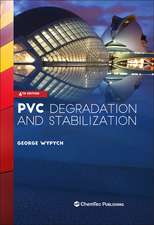Databook of Antistatics
Autor Anna Wypychen Limba Engleză Hardback – 15 oct 2013
Each additive is presented with data in the following categories: General Information; Physical Properties; Health and Safety; Ecological Properties; and Use and Performance. The Databook includes a large amount of data, from state, odor, and color to autoignition temperature and probability of biodegradation. Recommendations are provided for products, processing methods and dosages, and the features and benefits of each additive are assessed.
- Contains the most extensive data available on a large number of antistatics
- Features 130 data fields for each additive, divided into the following categories: General Information, Physical Properties, Health and Safety, Ecological Properties, and Use and Performance.
- Includes an assessment of benefits and properties of each additive, recommended dosages and processing methods.
Preț: 1570.65 lei
Preț vechi: 2039.81 lei
-23% Nou
Puncte Express: 2356
Preț estimativ în valută:
300.58€ • 326.39$ • 252.49£
300.58€ • 326.39$ • 252.49£
Carte tipărită la comandă
Livrare economică 22 aprilie-06 mai
Preluare comenzi: 021 569.72.76
Specificații
ISBN-13: 9781895198614
ISBN-10: 1895198615
Pagini: 481
Ilustrații: black & white illustrations
Dimensiuni: 156 x 234 x 27 mm
Greutate: 0.87 kg
Ediția:New.
Editura: ELSEVIER SCIENCE
ISBN-10: 1895198615
Pagini: 481
Ilustrații: black & white illustrations
Dimensiuni: 156 x 234 x 27 mm
Greutate: 0.87 kg
Ediția:New.
Editura: ELSEVIER SCIENCE
Public țintă
Research and development, production chemists and engineers, environmental engineers, environmental professionals, industrial hygienists, legislators, medical professionals, civil engineers, university professors, students.Cuprins
1 Introduction
2 Information on data fields
3 Antistatics
3.1 Organic materials
3.1.1 Amines and amides
3.2 Powders
3.2.1 Carbon black
3.2.2 Inorganic materials
3.2.3 Metal powders
3.2.4 Metal-coated microspheres
3.3 Fibers
3.3.1 Carbon (graphite) fibers
3.3.2 Metal fibers
3.3.3 Nanotubes
3.4 Polymers
3.4.1 Inherently conductive polymers
3.4.2 Electrically conductive polymers
3.4.3 EMI/RFI/ESD protection
3.4.4 ESD protection
3.4.5 Polymer blends
3.4.6 Static dissipative polymers
3.5 Masterbatches
2 Information on data fields
3 Antistatics
3.1 Organic materials
3.1.1 Amines and amides
3.2 Powders
3.2.1 Carbon black
3.2.2 Inorganic materials
3.2.3 Metal powders
3.2.4 Metal-coated microspheres
3.3 Fibers
3.3.1 Carbon (graphite) fibers
3.3.2 Metal fibers
3.3.3 Nanotubes
3.4 Polymers
3.4.1 Inherently conductive polymers
3.4.2 Electrically conductive polymers
3.4.3 EMI/RFI/ESD protection
3.4.4 ESD protection
3.4.5 Polymer blends
3.4.6 Static dissipative polymers
3.5 Masterbatches


